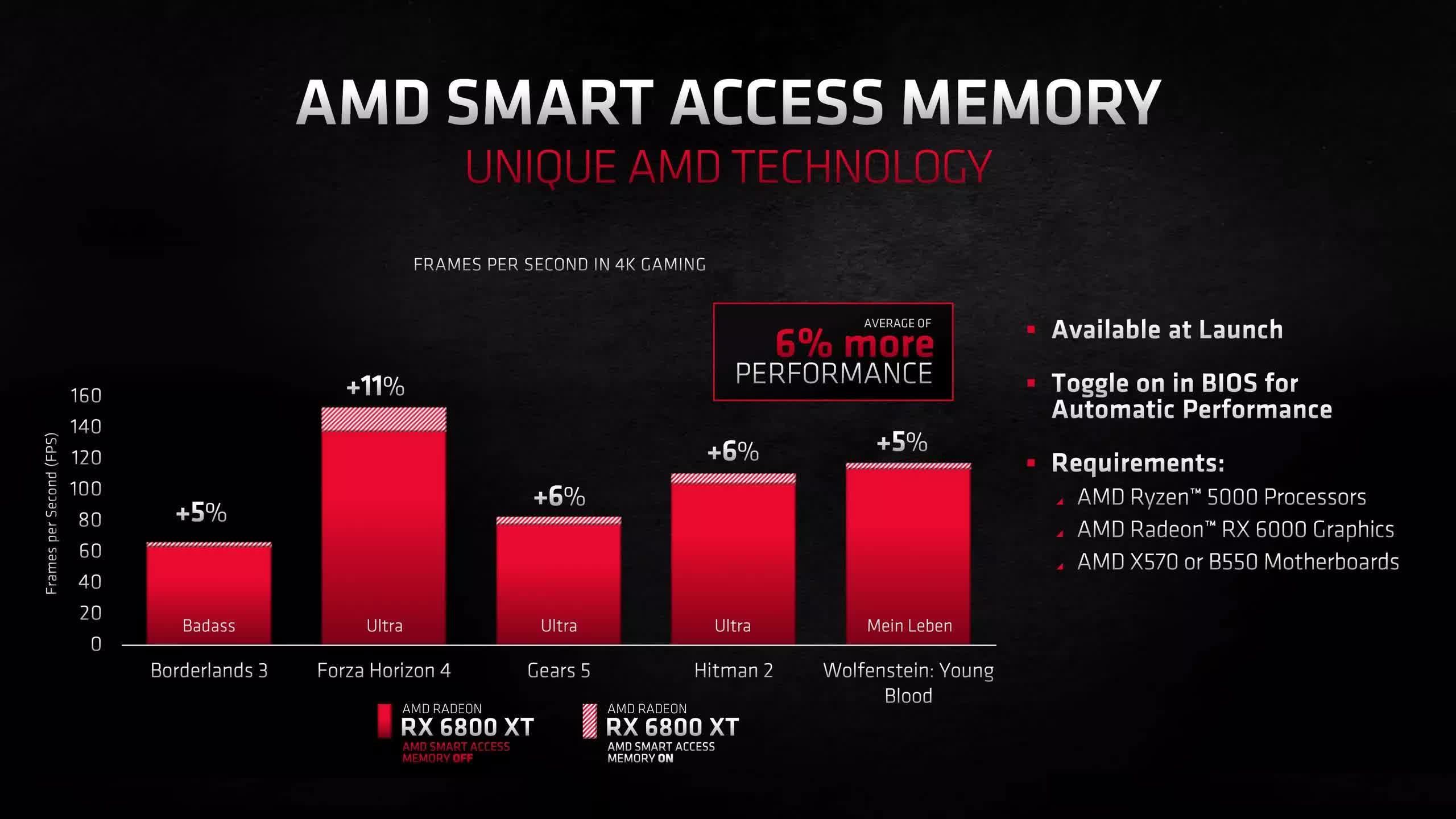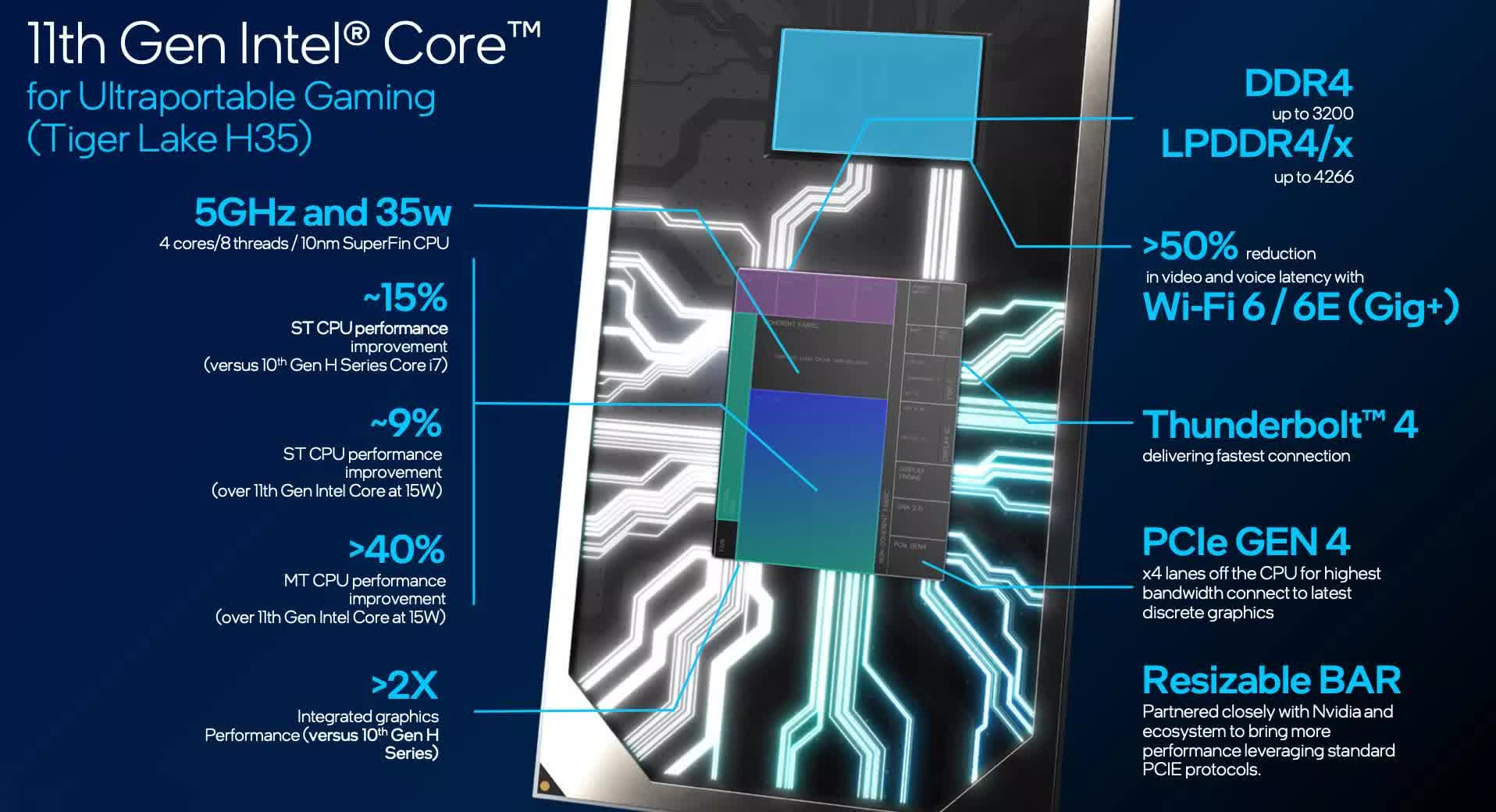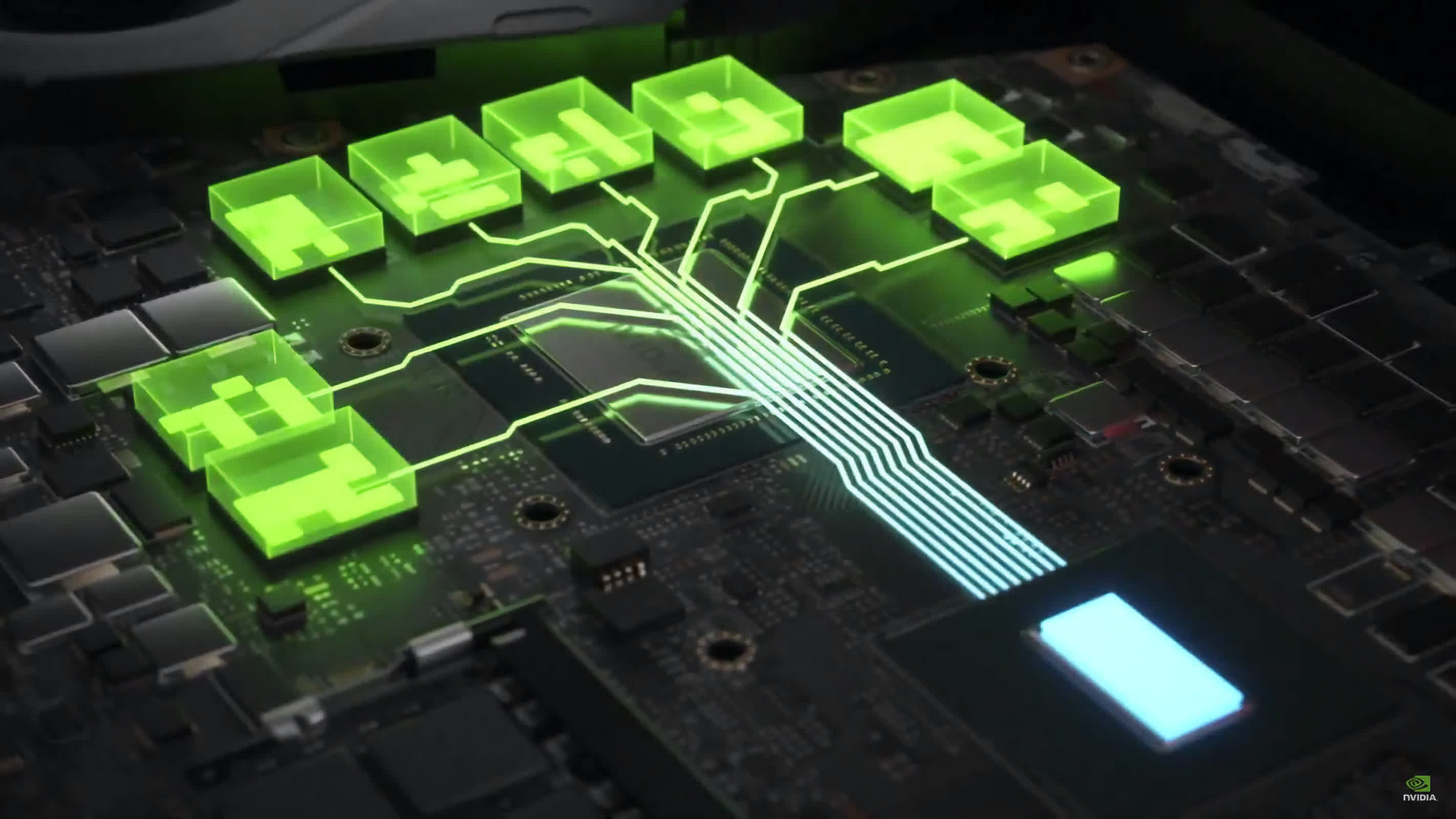In brief: Hardware manufacturers AMD, Intel, and Nvidia have been working on incorporating a new performance-boosting feature that has been part of the PCIe spec for years called Resizable BAR (resizable Base Address Register). It's been demonstrated that by allowing the dynamic expansion of the data channel between the CPU and the graphics memory, you can squeeze some additional performance from your setup.
Resizable BAR defines how much of your graphics cards VRAM is to be mapped for access by the CPU. Typically the CPU can access up to 256 MB of mapped VRAM, but with the resizable BAR it can have full access to the graphics cards' VRAM buffer.
AMD already added support for Resizable BAR (calling it SAM or "Smart Access Memory") for specific systems running both a Ryzen 5000 CPU paired with a Radeon RX 6000 series graphics card. We've tested the feature and surely it can bring some visible performance increases in titles like Assassin's Creed Valhalla, Borderlands 3, Dirt 5, The Division 2, Hitman 2, and Godfall. However in some other titles it either saw zero benefit or even a marginal loss of performance.
AMD tried marketing this as a "unique" technology, but what it really should have said was that unless you buy its latest hardware, you're practically out of luck. Nvidia and Intel have since promised to roll out the feature to other system configurations.

For those of you who prefer Intel - Nvidia setups or happen to have paired an Intel CPU with an AMD graphics card, things are a bit more complicated, since Intel only started offering support for Resizable BAR with 11th-gen Rocket Lake desktop CPUs on Z490 motherboards last December.
Some motherboard manufacturers such as MSI and Asus have promised that they will eventually bring this to other platforms including some that are limited to 8th-gen Intel CPUs, but you'll still need to use a Radeon 6000 series graphics card or one of Nvidia's RTX 3000 series, both of which are in short supply and will become even harder to acquire in the coming months.

For laptop gamers, Intel this week announced during the Tom's Hardware Show that it will bring Resizable BAR to systems equipped with 11th-gen Tiger Lake CPUs and H35-series mobile chipsets, as well as systems equipped with 10th-gen Comet Lake-H CPUs and H45-series chipsets.
The company didn't offer an exact timing, but pointed out that in its internal testing it found that some games are seeing performance gains of 5 to 10 percent. OEMs are currently getting close to validating BIOS and driver updates to enable Resizable BAR, but since cryptocurrency miners are snatching the newest gaming laptops to cope with the shortage of desktop graphics cards, it will be a while before you can see this "free" performance boost for yourself.
Overall, it's good to see that Intel, Nvidia, and AMD are working together to make Resizable BAR a standard feature on modern systems, even if in the short term it will require an upgrade that is either costly, not in stock, or both.
